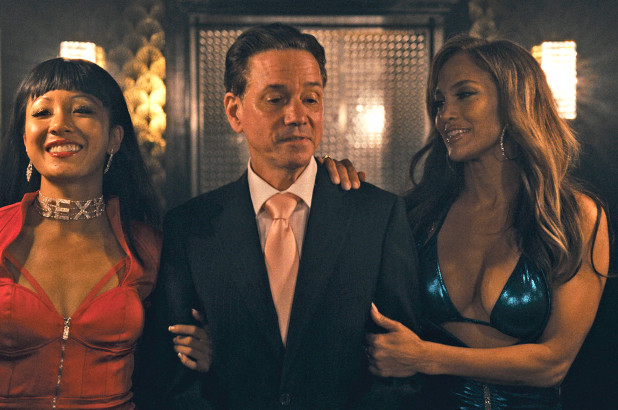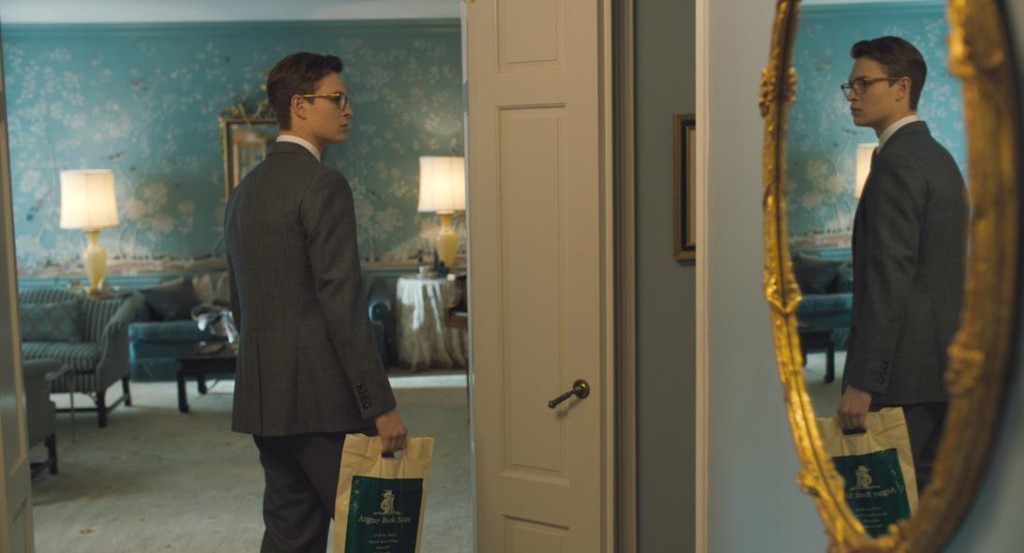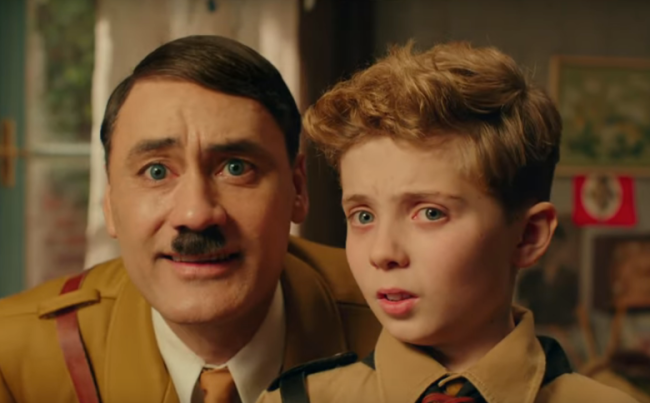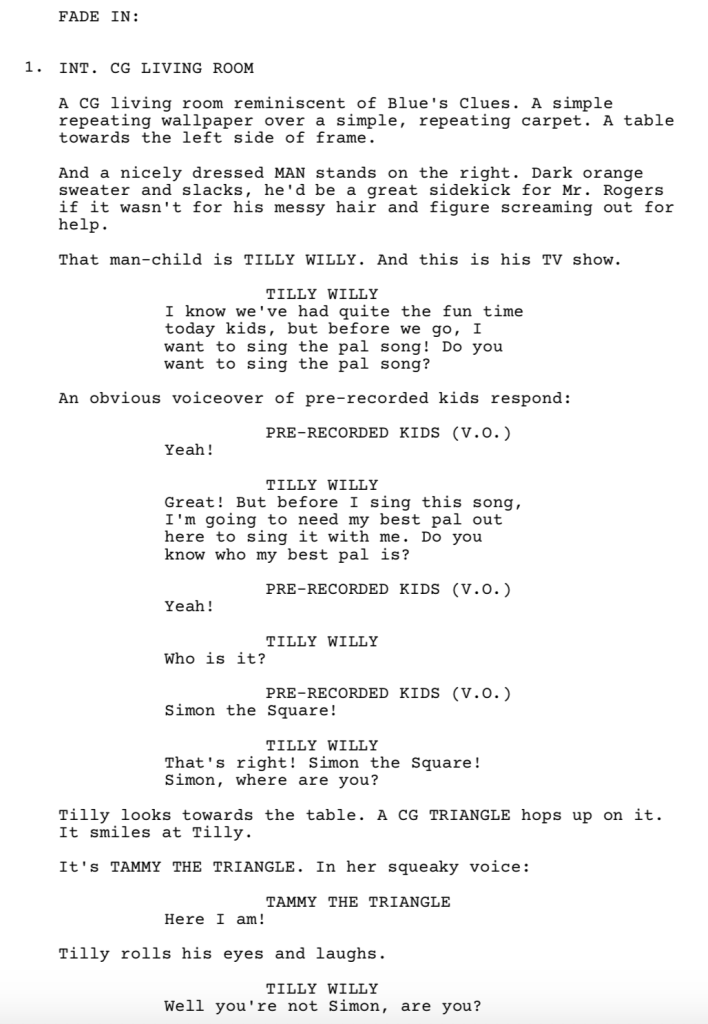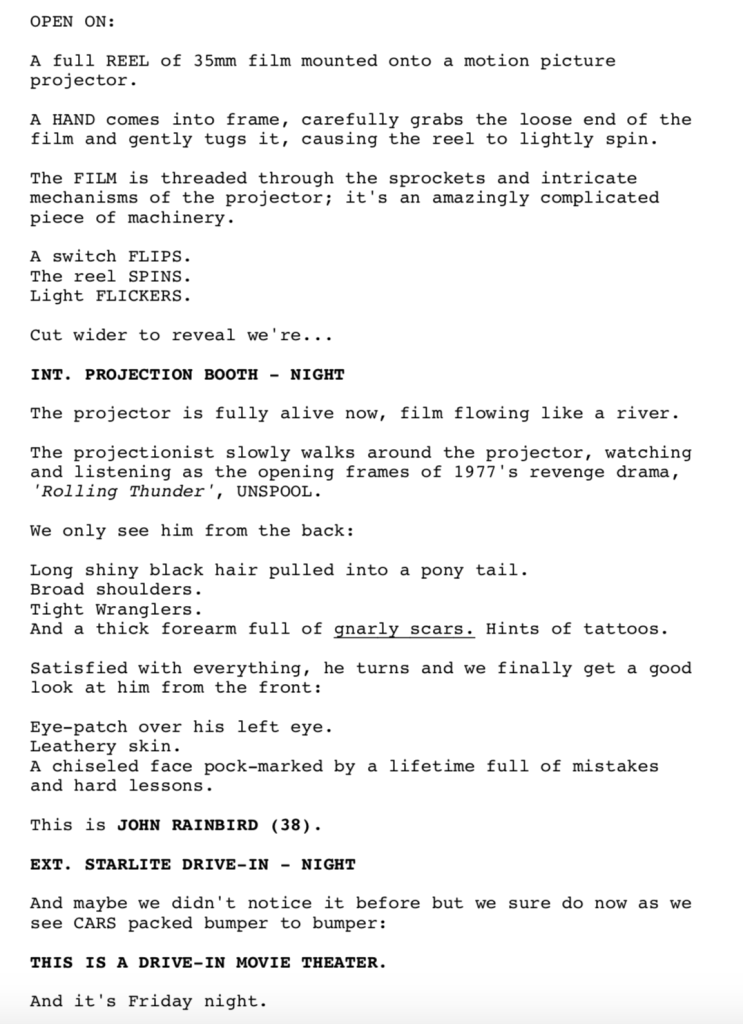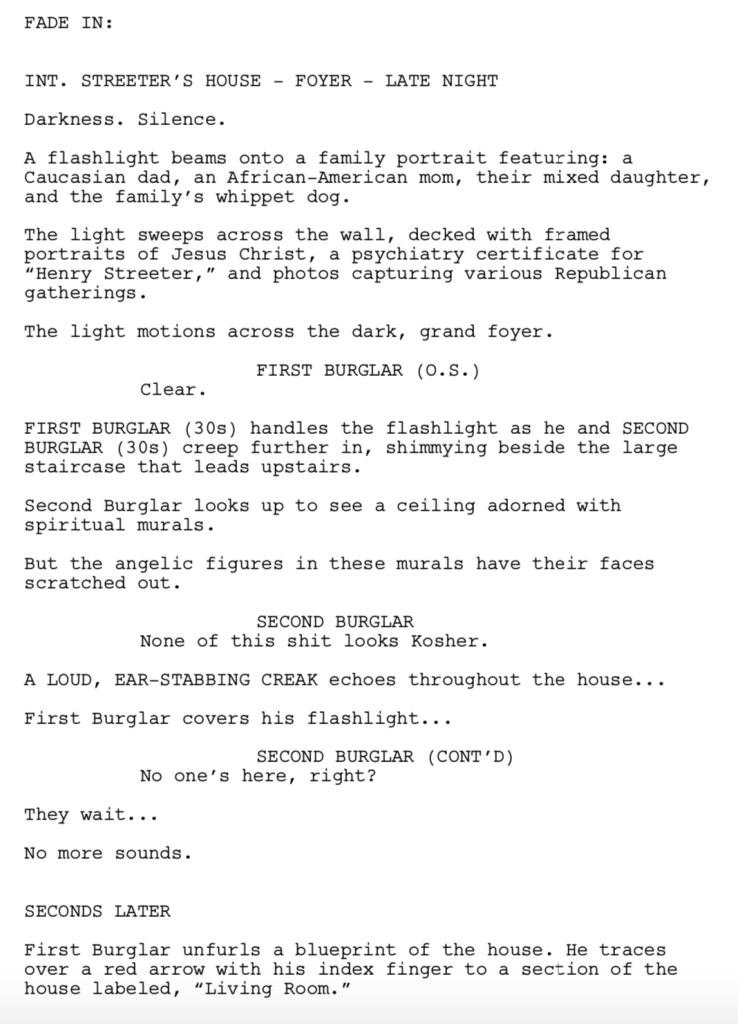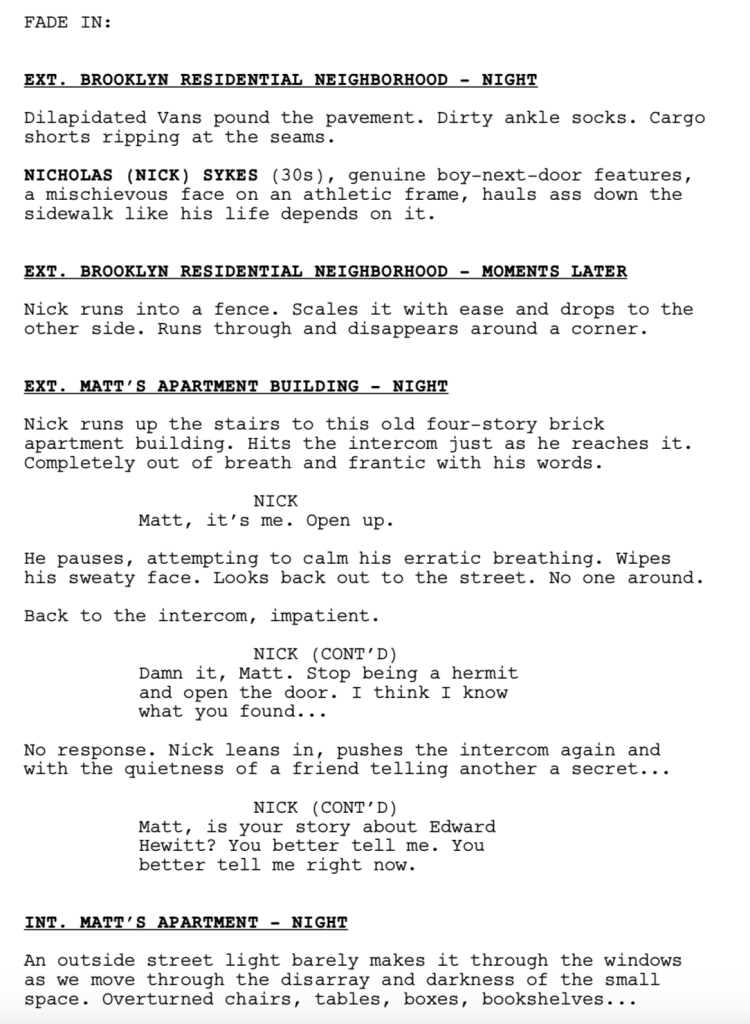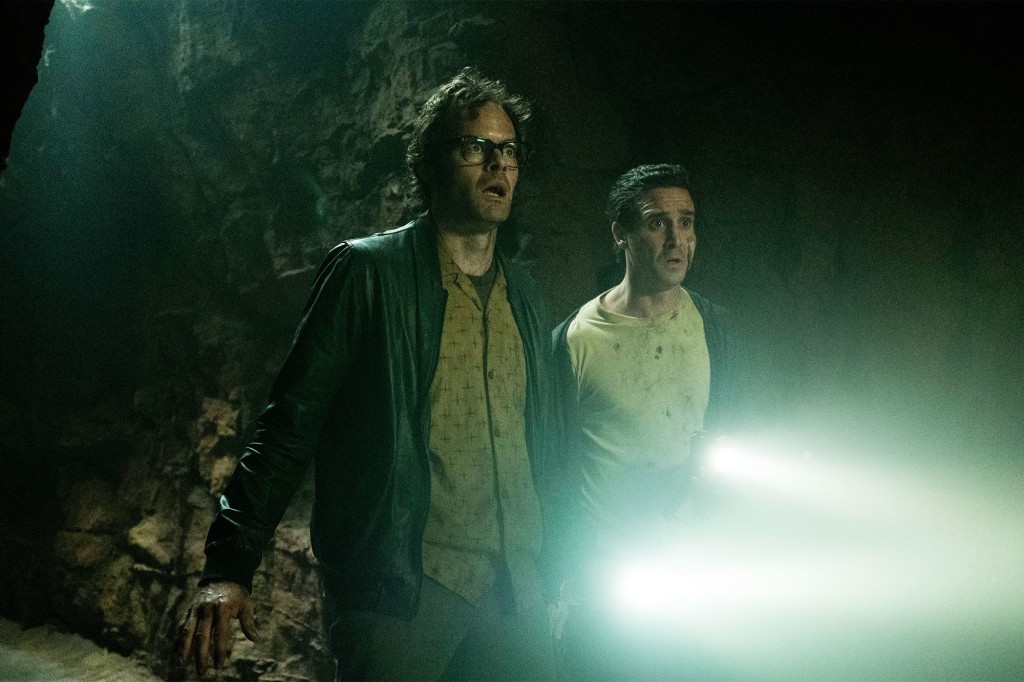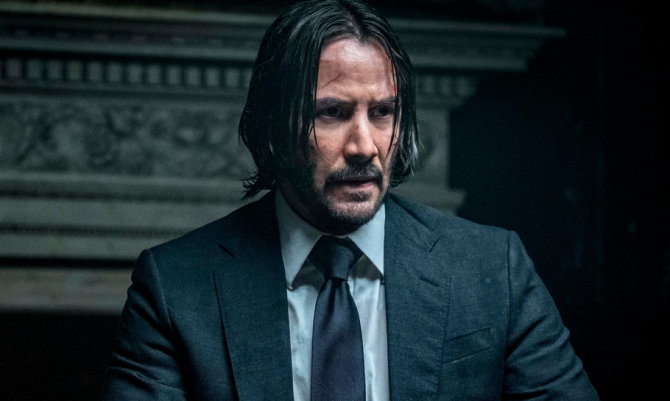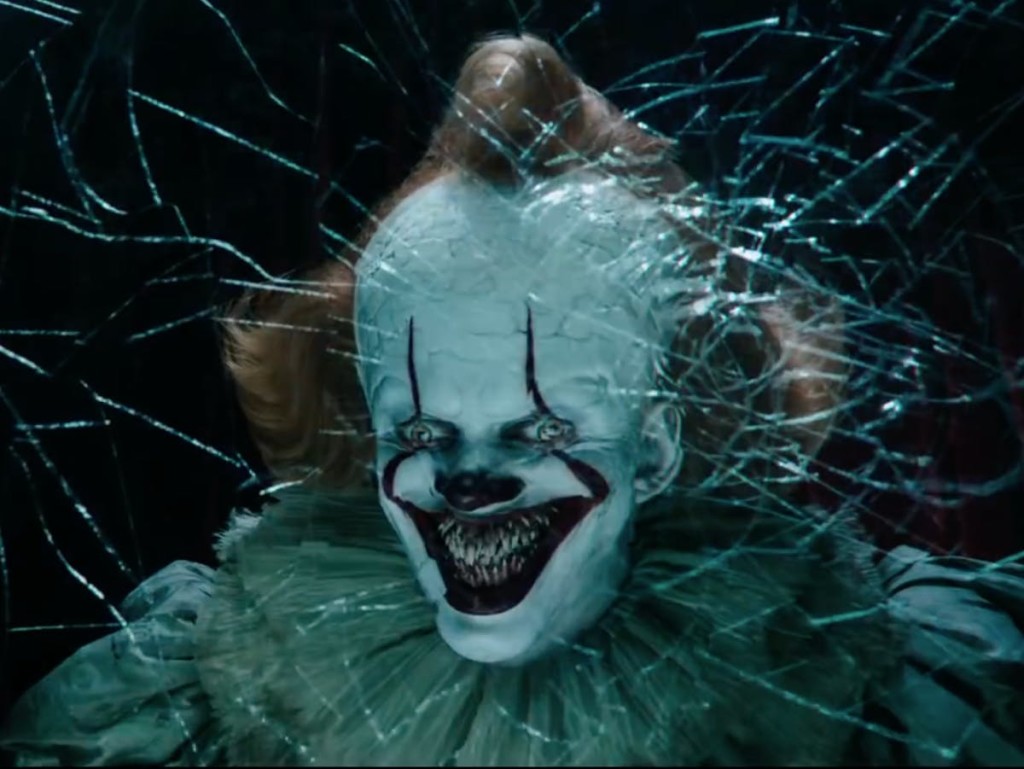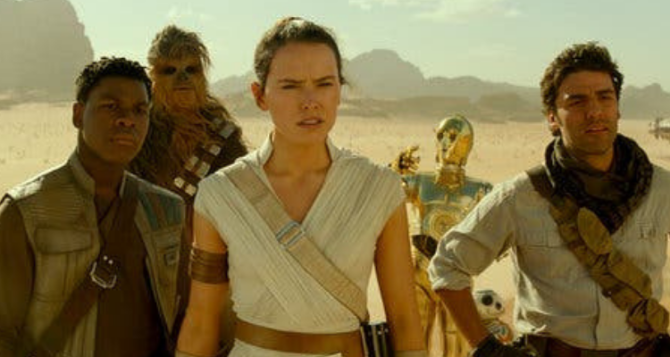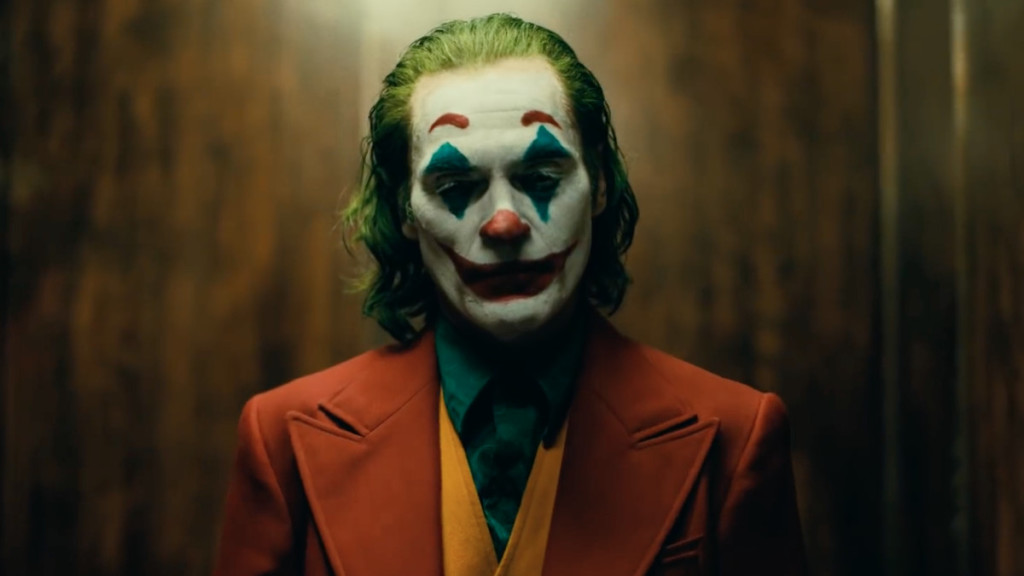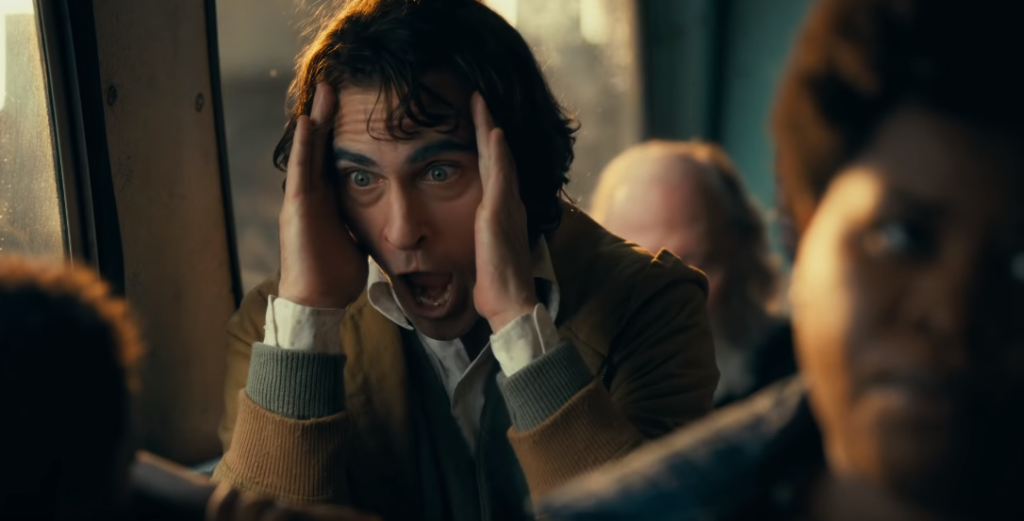The box office numbers are IN for the third weekend of September and while, at first glance, it may seem like an inactive weekend, there is actually a lot going on here. Remaining in the number one spot is It: Chapter 2, which dropped 55% to 40 million dollars. For reference, Spider-Man: Far From Home made the exact same amount of money as It 2 did on its opening weekend, then made 45 million dollars in its second weekend, a 51% drop. Considering It 2 isn’t a very good movie, I’d be happy if I were Warner Brothers. And hey, the more non-Disney movies that top the box office, the better.
What I learned: Because you can slap it on a poster and sell millions of tickets, a fun terrifying villain with a mask can do wonders for your script’s marketability – even scripts that aren’t very good.
The biggest box office surprise this weekend (or dare I say, the summer!) is Hustlers. Who saw this coming?? A month ago, the similarly marketed, “The Kitchen,” tanked with 5 million dollars. Add to that Hustler’s biggest star is Jennifer Lopez, whose last five live-action movie openings are – 15 million for The Boy Next Door, 7 million for Parker, 10 million for What to Expect When You’re Expecting, 12 million for The Back-Up Plan, and 6 million for Second Act. On top of this, the trailers exhibited a mean-spirited tone. One gender ruthlessly exploiting another then celebrating it. For these reasons, I had this movie opening at 11 million TOPS! However, women really wanted this film (they made up 70% of the audience) and came out to the tune of 33 million.
But this begs the question – why did women support this movie and not The Kitchen? Is it the stripper aspect? Is it because the victims of the crimes are men – something the Hustlers trailer leaned into? One thing I tend to forget is that a well-made stripper movie will do well. I predicted the same sorry fate for Magic Mike when it came out and that film did huge business. It’s perpetually fascinating subject matter for people. I still remember when The Full Monty took over the world. And that movie was made for peanuts. I will say I’m happy for Lorene Scafaria, who both wrote and directed the film. I was a big fan of her early scripts, many of which I gave impressives to. I remember her being really bummed when her directing debut, Seeking a Friend for the End of the World, underperformed. I guess the universe came back to balance things out.
What I learned: I need to stop underestimating stripper scripts. Whether you’re writing a sexy drama or a goofy comedy, there’s a ton of material to play with in this subject matter. I won’t be fooled again.
The saddest, although not unexpected, box office story this weekend was The Goldfinch. The Oscar hopeful about… I’m not sure what, managed just 2.6 million dollars. That’s barely a $1000 a theater average, which amounts to the several people who thought they were walking into It 2, and by the time they realized it was a different movie, were too lazy to leave.
The Goldfinch has always perplexed me. As a novel, it would go on to win the Pulitzer and join the handful of novels on Amazon to receive over 25,000 ratings. I purchased it and, over the years, tried to read it several times, only to stop because of a) confusion, b) nothing was happening, and c) I had no idea what the story was about. So it’s not surprising to me that the trailer came out and afterwards everyone was shaking their heads mumbling, “Wait, so what’s the movie about again?”
People. One of the most important things when it comes to movies is CLARITY. People have to know what your movie is about. I may not have been into Hustlers, but I definitely understood what the movie was about after watching the trailer – strippers taking down white dudes. The thing is, somewhere in this novel/movie is a good concept. From what I can gather, this kid’s mom dies in a museum explosion/fire, and to hold onto her memory, he steals the million-dollar plus painting he was looking at when the explosion occurred – “The Goldfinch” – and many years later, the authorities suspect he might have stolen the painting and start closing in on him. That’s not a bad idea.
But where is the character goal? What is our hero trying achieve? In a novel, where you’re inside the character’s head, that’s not as important. But in a movie, where we can only see the outside of someone, we need an ACTION for them to PURSUE. And that’s why nobody came to see this movie. There was nothing in the trailer to indicate what our hero was pursuing. He just seemed really sad. And being really sad for three hours isn’t a movie. So chalk this one up to “should’ve remained a book.”
What I learned: Sadness on top of sadness never works. You need balance. You need humor or happiness to offset the sadness. Otherwise it’s too much. The most egregious example of this is 2003’s House of Sand and Fog, another novel adaptation. Sadness stacked on top of sadness stacked on top of sadness is a recipe for boredom (and a 2.5 million dollar opening weekend).
Next weekend holds one of the bigger wildcards of the fall – Ad Astra. The journey this movie’s gone on is almost as captivating as Brad Pitt’s journey through the solar system in the film. It started off as this secretive high-budget hard science fiction film from Fox. Then, Disney bought Fox. Immediately they started scrapping Fox movies. Somehow, Ad Astra, the most un-Disney movie of them all, survived the purge. This after Disney canceled the MOST Disney-like movie on Fox’s slate, Mouse Guard. Still, you could tell Disney was uncomfortable with the movie and rumors were that they were going to dump it into theaters with barely any marketing. Then Once Upon A Time in Hollywood came out and made 2019 the “The Summer of Brad Pitt,” so Disney changed its strategy and embraced the Pitt renaissance, focusing the marketing less on the deep dark subject matter and more on Pitt’s performance. All this has resulted in an impossible to predict box office take for the film. The current estimate is 20 million. But some people think it could do double that. What do you think?
What I learned: Make the journey personal for your hero. With Ad Astra, the writer could’ve easily made the person Brad Pitt is traveling the solar system in search of to be “some random dude.” Instead, he made it his father.
Finally, Taika Waititi’s Jo-Jo Rabbit just won the audience award at the Toronto Film Festival, beating out the likes of Joker, Just Mercy, A Beautiful Day in the Neighborhood, Knives Out, Ford vs. Ferrarri, Marriage Story, and Parasite. That may seem like a small deal, but, as Deadline points out, the Toronto Audience Award has become somewhat of a predictor for the Best Picture Oscar winner. The win is somewhat of a comeback for Rabbit, as many critics ran to the internet after the initial screening whining about the triggering content, seemingly ending Rabbit’s chances at an awards run. For regular movie lovers to call out their oversensitivity is a huge win, especially because Disney is so nervous about this film in the first place (it’s another Fox film they inherited and wanted to ditch, but they didn’t want to upset Waititi, who’s become a major player in the company’s future). I’m just glad that good screenwriting is being recognized. This was one of the best scripts I read last year. And I’m pumped that despite its “controversial” content, people are finally getting to see that.
What I learned: Audiences respond well when you put them through a full gamut of emotions. This film will make you angry, it will make you laugh, it will make you cry, it will make you happy. When you put someone through that kind of emotional roller coaster, they’re going to have a strong reaction to your script/movie. I have no doubt that’s why audiences loved this.
I don’t want to sway anything here (I haven’t opened the script) but I’m excited that the Scriptshadow 10 Pages Contest winner is participating in this week’s Amateur Showdown. If you’re curious about what happened to that winning script, I’ll let him field questions in the comments.
Now before we get started, I want to share a quick piece of screenwriting advice. Don’t send me scripts that center around slackers. That’s not because I have a prejudice against slackers. But a “slacker” is all of the things that a good movie character is not. He’s lazy. He’s passive. He’s reactive. And because he’s rarely active, we have to wait for the movie to come to him. There are a few comedy situations where slackers work. But whenever I see “slacker” in a logline, my eyes inadvertently roll. I would never presume what other readers like. But it’s safe to say that a slacker hero isn’t going to get anyone excited to read your script. UNLESS it’s the most hilarious premise ever. I’m bringing this up because I read five slacker submissions today.
Okay, onto the contest. You know how we do it!
Screenwriter Showdown is a single weekend tournament where the scripts have been vetted from a pile of hundreds to be featured here, for your entertainment. It’s up to you to read as much of each script as you can, then vote for your favorite in the comments section. Whoever receives the most votes by Sunday 11:59pm Pacific Time gets a review next Friday.
Let’s get some fresh blood into the next showdown! Send a PDF of your script to carsonreeves3@gmail.com with the title, genre, logline, and why you think your script should get a shot.
Good luck, everyone!
Title: Tilly Willy and his Neighbourhood Pals
Genre: Psychological Horror
Logline: A kidnapped children’s TV show host tries to earn his freedom.
Why You Should Read: Because who doesn’t love a children’s tv show in the horror genre? Also, I know you like a strong opening and I think I have exactly the type of opening you’re looking for. It’s also a contained story because I plan on filming it, which is nice with all the Blockbusters coming out.
Title: Blood Law
Genre: Revenge Thriller
Logline: A Native American ex-con looking into the disappearance of his niece finds himself on a rage-fueled journey into snuff filmmaking and 1970’s Hollywood.
Why You Should Read: Sometimes a character pops off your imagination and demands a story be written about them. John Rainbird is that character and ‘Blood Law’ is that story. It’s a gritty, unexpected, unique script with a life of its own. It’s quirky. It’s violent. It’s full of colorful and engaging characters. ‘Blood Law’ scored a coveted 8 on the Blacklist (their take: “This bloody and visceral thriller doesn’t pull any punches when it comes to its depictions of brutality and violence, but it also sports top-notch characterizations, finely crafted dialogue, and a setting absolutely dripping with tone and style: a modern love letter to the classic “revenge” films of the drive-in cinema age.”), garnered some interest from an independent producer and a major production company where the the Head of Story Development is a major advocate (Email I got from him shortly after he received the script, word for word: I wanted to let you know that I’m on page 43 of Blood Law and I had to stop and shoot you an email to tell you how much I’m loving this script.) I’m very proud of this script and eager to keep the momentum going. Would be thrilled to get the Scriptshadow community’s take. Thanks a million.
Title: The Gateway
Genre: Horror/Thriller
Logline: After losing his day job, a struggling artist and his progressive girlfriend move in with her Christian-conservative parents in an attempt to get back on their feet… only to realize that her parents release demons from hell through a doorway hidden in their house.
Why You Should Read: I’m a Nicholl quarter-finalist of 2018 and I read the site every day. One notion that always stuck out to me, is the importance of having “that scene.” I believe there are couple here; one of which was inspired by something on your ‘favorite movies’ list of 2018. Also, the social commentary came to me upon conception of the idea and I can’t ignore its ties to current trends. I had a ton of fun writing the characters (most important to me, anyway), but I’m hoping to get the your take on how it stacks up.
Title: THE GRID
Format: Pilot (hour long)
Logline: When an up-and-coming journalist is tasked with finding the story that caused his mentor to disappear, he will uncover a shocking conspiracy that will threaten his news outlet’s very existence and shake the entire country to its core.
Why You Should Read: With so many cop, lawyer and doctor shows everywhere, I’ve always found it odd that journalist shows never really break out. There’s suspense, intrigue, secrets, great characters and plenty of shows use those characters as sub-plots, but none as the primary. The exception was The Newsroom, but that was much more political than anything else, based on tv journalism and not remotely the direction this goes.
I find the profession fascinating (politics aside) and would love to have the opportunity to explore characters and plotlines in and around this field. This particular pilot isn’t written with any act breaks because I received feedback that it would be better to write with an online target audience in mind.
I’d love to get any feedback available to make this as great as it can be.
Thank you for the consideration!
Title: The Well
Genre: Psychological Horror / History
Logline: Ten years after the vicious atrocities of the Partition, a Pakistani woman attempts to make peace with the brutal murder of her family when a vengeful spirit returns to haunt her.
Why You Should Read: This is a setting and historical event that has never been depicted in Indian film, let alone Hollywood and is one of the most overlooked humanitarian crises of the 20th century as it came in the immediate aftermath of World War 2. Up to 2 million people died as a result of this mass migration, and the trauma and violence that occurred has formed the rigid backbone of the Pakistan-India conflicts we see today. By taking a supernatural angle, I’ve attempted to manifest the inner turmoil felt by the survivors as well as present a moral conflict for the reader to constantly have in mind throughout. As a Pakistani, this is an extremely important topic to my cultural history, and after hearing some of the absolute horror stories my direct ancestors faced just 70 years ago shook me to my core. This is an event that had a direct impact on every single Pakistani and Indian, and fearlessly showcasing the terror of it all will be something I’ll forever strive to accomplish.
This week started off on a bad note.
It: Chapter 2, a movie I once proclaimed had the potential to be the best movie of the year, turned out to be a big stinking bag of garbage. You know what kind of garbage I’m talking about. The kind where you clean out your fridge into the garbage bag but you still wait a few days before taking the bag out? Yeah, well It: 2 was SO BAD that if I were given the choice to either smell that bag for thirty minutes or sit through that 3 hour movie again, I would choose the bag.
However, then, like an angel coming down from the heavens, the Joker script arrived. How amazing was this script? It received a “double impressive!!!” I’ve given out four “double impressives” in the totality of Scriptshadow. What was interesting about reviewing these stories back to back is that I was directly able to contrast why one plunged and the other soared. Joker was great due to its utterly simple structure. It followed one man on a simple and clear journey. “It 2,” meanwhile, covered an endless number of characters, which sent the narrative in a million different directions, leaving us with a sprawling mess of a story. This, I proclaimed, is why you should always favor SIMPLE STORIES.
But there were a number of you who argued that there are lots of movies with multiple protagonists that are great. The first “It” had multiple characters and it did well. Then you have Avengers, Guardians, Fast and Furious, X-Men, Star Wars, Toy Story, Glass, Good Boys. It could be argued that Hollywood FAVORS the multiple-protagonist approach. Well hold on there, Sally. We still have John Wick, Captain Marvel, Spider-Man, Aladdin, and Shazam! to name a few of the big movies this year. But there is truth to the idea that more movies contain larger casts with sprawling stories. And that if you want to be a big-league writer – I’m talking one of these A-listers making 7 figures an assignment – you need to know how to write big sprawling complex scripts.
So let’s get the obvious out of the way. A script with a single hero is going to be easier to write. Period. If you have one hero, you only need to worry about one plot goal and one character transformation. Therefore you can focus all of your creative energy on making those perfect. That’s what Joker did. Arthur wanted to be a famous comedian. That’s his goal. His transformation revolved around an inability to connect with the world and the lengths he would go to make that connection. Boom. Perfect.
Once you move to a property like Avengers, you’re having to worry about that x 7. But let’s get something clear. Marvel is an enigma. It has two advantages nobody else has. It’s dealing with characters with 50+ years of history who the average person already knows. And they treat their films like TV shows, not movies. They’re connected. This means that by the time we get to an Avengers movie, we know everyone intimately. And that means the writers don’t have to spend precious time setting characters up or giving you important backstory, all of the things that can weigh a screenplay down. All they have to do is convey the plot clearly and occasionally check in to make sure you know what’s going on.
Bringing this back to today’s argument, you’ll never have that Marvel security blanket if you yourself write a multi-protagonist script. You’ll have to meticulously set everyone up, which will take seven times as long because you’ve got seven main characters instead of one. And then, once that’s over, you’ll have to set up what your characters are actually trying to do. And once that’s over, you have to bounce back and forth between each storyline in a way that keeps all the storylines going without us forgetting about or getting confused about what’s going on. You are also battling the juggernaut known as pacing. This is what destroyed It 2. Technically, we knew that each of the characters was trying to get their individual artifact. So there were clear character goals for everyone going into our second act. But each storyline was so similar and so monotonous that it began to feel like a relay race with the school’s slowest runners. Now it’s your turn to be see something scary. Now it’s your turn to see something scary. Now it’s your turn to see something scary. When I talk to people about that movie, that’s the section where they all say they checked out.
The problem that they run into and that you’ll run into when you try and write a big sprawling script, is that, inevitably, three or four of your characters won’t be that interesting. So now you’re stuck giving uninteresting characters full on scenes and it isn’t working because the characters are inherently flawed. Who cares about the fat kid turned hunk? Who cares about Eddie? Who cares about grown-up Beverly Marsh? She’s a dud. When you’re writing a single-hero story, you can put all of your time and effort into making that character the greatest most compelling most interesting character ever so that we’ll want to be around them every single second. This is how scripts like Nightcrawler get written.
HOWEVER, if you absolutely must write a big sprawling complex story with lots of characters, I have a few tips for you. First, use a MacGuffin. Create one thing that everybody is after. Greatest MacGuffin ever? The Ark of the Covenant. If you have a great MacGuffin, it ensures that the audience always knows what your characters are after. Whether it’s in minute 20 or minute 80, we know they’re still after that MacGuffin. And that makes up for one of the complex movie’s biggest weaknesses – its lack of focus. With a big clear MacGuffin, you can make your complex movie almost as focused as a John Wick.
Next – make sure the setup behind your characters’ motivations makes sense. The worst thing that can happen in a big sprawling movie is for the audience to start questioning why the characters are doing what they’re doing. This is what separates the great “It” from the terrible “It 2.” In the first movie, they’re kids who are STUCK IN THEIR TOWN when an evil clown starts hunting them. Think about that for a second. Kids can’t leave their homes. They are prisoners to their town until they’re old enough. This is why “It” worked so much better. Our characters had no choice but to fight the clown.
Contrast that with It:2 where the characters are all adults, and therefore can leave whenever they want. Now I know what a few of you are thinking. “No Carson. If they leave the town, they’ll die.” Says who? How do they know that? Where’s the proof? There isn’t any. The only reason you’re saying that is because a character said it. And the only reason a character said it is because the writer realized they had to come up with a reason why these people didn’t just hightail it out of here. So MAYBE if they try and leave, they die. Maybe. Cause somehow Pennywise has that power. Maybe. — When you start forcing desperate shaky reasoning into your character’s mouths to cover up plot holes, I got news for you buddy. Your script is in major trouble. You want your logic and motivation built into the story’s foundation, like “It” had.
Finally, if at all possible, avoid fractionating your characters. JJ Abrams hasn’t talked about Rise of Skywalker much. But one of the things he made very clear was that all the characters were going to be on an adventure together this time. This is because JJ understands that the more you divide your characters up, the more potentially confusing and rambling your story gets, and the more likely you’re going to come up with a dud sub-plot, like Canto Bite. So here’s the rule. Keep all your characters together if possible. If you’re going to split them up, limit it to two groups. It’s still possible to come up with two awesome parallel plotlines in a single movie. However, if you decide to divide your big group into three or more sub-groups, you might as well call your local funeral home and ask them if you can get an early discount on a casket. It’s not that it can’t be done. And I’m not talking about splitting individuals up, which is often done during the climax of, say, a horror film. But if you’re writing one of these big sprawling movies with multiple plotlines and multiple groups of characters, the level of screenwriting expertise required to pull that off is higher than you can imagine.
This is why I tell every aspiring screenwriter: Don’t write The Godfather before you’ve proven you can write Rocky. Don’t write The Departed before you’ve proven you can write Taken. Don’t write Inception before you’ve proven you can write The Terminator. And don’t write The Dark Knight before you’ve proven you can write “Joker.”
Yo, do you have a logline that isn’t working? Are those queries going out unanswered? Try out my logline service. It’s 25 bucks for a 1-10 rating, 150 word analysis, and a logline rewrite. I also have a deluxe service for 40 dollars that allows for unlimited e-mails back and forth where we tweak the logline until you’re satisfied. I consult on everything screenwriting related (first page, first ten pages, first act, outlines, and of course, full scripts). So if you’re interested in getting some quality feedback, e-mail me at carsonreeves1@gmail.com with the subject line: “CONSULTATION” and I’ll get back to you right away!
Genre: Thriller
Premise: An inexperienced Coast Guard Captain is put to the test when a simple submarine drug bust nets her one of the most notorious drug lords in the world.
About: This script finished low on last year’s Black List and comes from newbie writer Alex Sohn, who adapted the story from a Men’s Journal article titled, “DRUG WAR ON THE HIGH SEAS: BEHIND THE COAST GUARD’S BILLION-DOLLAR BUSTS.”
Writers: Alex Sohn (based on the aforementioned article by Hunter Atkins)
Details: 116 pages
Hey, look at me. Look at me. I am the captain now.
Three cheers to any script that inspires you to say that out loud to your nearby confused pet. What’s happening right now? Are we really going to get two IMPRESSIVES in a row? What is this, 2010, when I loved anything that had time travel or a talking animal in it? Okay, I still love time travel and talking animals (has there ever been a script with time travel AND talking animals??). But usually when you get down to the Black List basement, you find a bunch of clingers (“clingers” – adjective – definition: screenplays desperately holding onto the bottom of the Black List despite displaying no inherent skill other than knowing how to use Final Draft).
I knew right away that this script had a chance from its logline: “An inexperienced Coast Guard Captain…”. Had the word “inexperienced” not been here, I wouldn’t have opened the script. Why? Because that’s the whole movie right there. That’s where you get your main source of conflict. And identifying a source of conflict that’s going to last you an entire movie is one of the keys to writing a great script. If this is just a regular captain who gets stuck in this situation – or worse, a well-equipped captain – well then we’re pretty confident that they’re going to figure it out. People watch movies to find out what happens next. If you already know what happens next, there’s no reason to watch the movie.
26 year old Andi Mitchell is an Operations Commander on a Coast Guard ship. After the ship picks up four members of a drug boat carrying 400 kilos of cocaine, Andi’s captain delivers her some bad news. A hurricane is coming down the pike and all Coast Guard ships will be needed for rescue. However, they can’t rescue anyone with 4 drug dealers on their boat. So they’re shipping in a first generation iPhone type Coast Guard ship to hold the passengers until they clear extradition.
In other words, while the Coast Guard gets to go off into the hurricane and be all heroic, Andi has to babysit a bunch of tired drug runners. So Andi is given a ragtag B-crew of 10 men and told to hang tight. Not long after the Coast Guard leaves, however, Andi spots a pipe sticking out of the water. It’s a narco sub. Once the sub surfaces, her and her men board it and capture a mysterious man who just happens to be carrying a million dollars with him.
Not long after they bring the man onboard, their radar picks up a dot. A boat coming towards them. Then a second dot. Then five dots. Then ten. Then twenty. Then thirty. Andi decides very quickly that THEY NEED TO GET OUT OF HERE. They redline the ancient boat but the drug boats are gaining. After a chat with the Coast Guard, Andi learns what all the hubbub’s about. They’ve just picked up Salvador Morales, the biggest drug lord in Guatemala.
Out of nowhere, their boat shuts off. It’s too old to handle this Miami Vice sh&%. And with it goes the radio. Not only are they cornered, but they’ve got no way to tell anyone that they’re cornered. Andi charges down to Morales to find out what’s going on. He informs her that these men are not his friends. They’re his enemies. And they’re going to do anything to capture him alive. And if that fails? They’ll just blow up the ship. It will be up to the inexperienced Andi to make sure that doesn’t happen.
When I read a script, I have to have at least one scene I know is going to play like gangbusters in the trailer, and one unforgettable set piece that’s going to play like gangbusters in the movie. “Coast Guard” aces this test. The trailer moment is when the dots start appearing on the radar. One, two, five, ten, twenty, thirty. I love that THAT’S when we realize who they just picked up. They’re not told at first. It’s those dots appearing. That’s when we know this is serious.
The set piece is when they realize they’re going to die unless they can call for help. And Andi gets the idea to swim to a small boat that they’ve managed to take out. Everyone on that ship is dead and they have a radio. So she swims there without being seen, gets on the boat, realizes one of the men is still barely alive, calls for help on the radio, only for the boat to be boarded while she’s on it, forcing her to hide under one of the bodies, and somehow, some way, gets off of the boat alive. A great tense 10 minute set piece.
There’s some fun character work as well. I’m all for big hidden character secrets that are revealed late. But if it’s a random secret, it won’t land. It has to connect with the story in some way. For example, if it turns out Andi accidentally killed her kid in a car crash a year ago – dead child reveal is a VERY COMMON reveal I read in scripts – that can be in any script because of how non-specific it is, and therefore it lands with a thud. But what we learn here is that Andi used to be a major drug addict and gang member. It works because the whole movie is her angrily wanting to take down every single drug runner. So when that reveal comes, we finally understand why.
KYSM. Know Your Subject Matter. I knew I was in good hands right away after reading this line. “They have to stay in international waters until their extradition clears. That could be days. Or weeks.” It might seem like a nothing-line to the casual reader. But I’ve read all the lazy writers who would write a script about the Coast Guard and have no idea what extradition is or how it works. That line gave me the confidence that the writer was on top of this world.
And guys, research isn’t just to placate readers like me. The more you know, the more plot avenues are available to you. Extradition creates a very unique plot situation here, which ends up getting them into trouble. They can’t leave international waters until the extradition clears. So they’re stuck here. Had the writer not known about extradition, then Andi can bring the criminals back to the U.S. and the movie’s over.
And finally, can I just say how great water is for a movie? It traps your characters, infusing your script with drama before you’ve even written anything. You just have to make sure when you write something on water that the execution is great, like it is here, since it’s really hard to shoot on water. There are men and women in Hollywood still scarred by the productions of Waterworld and Titanic. So make sure your script is killer.
[ ] What the hell did I just watch?
[ ] wasn’t for me
[ ] worth the price of admission
[x] impressive
[ ] genius
What I learned: Whenever your script hits a lull (you can feel it as you’re reading it back to yourself), introduce a NEW TICKING TIME BOMB. This will create the script equivalent of a double shot of espresso. Here, we’d been in this standoff with the drug ships for 30-40 pages. It wasn’t getting boring. But the script definitely needed a spark. So what they did was they had one of the boat hands realize that the drug runners were waiting for the cover of nighttime. That’s when they were going to strike. This created an entirely new sense of urgency since they now needed to execute a plan before nightfall.
Wait a minute, wait a minute, wait a minute. Can it be? Do we have ourselves a rare [x] impressive script? Or, oh my god, wait. Could this actually be BIGGER than impressive? Read today’s review to find out!
Genre: Comic Book/Drama
Premise: A comedian trying to make a name for himself in the 1980s finds himself inadvertently inspiring a movement to take down the rich.
About: When this project was first announced, it was met with collective skepticism. You’re going to create a second Joker in the DC universe? Won’t that be confusing? And while people were down for Joaquin Phoenix playing the Joker, they weren’t as sure about Hangover director, Todd Phillips, helming the flick. Cut to a year later and “Joker” is the leading contender for Best Movie of the Year and Best Actor of the Year. Just the other day, it won Best Film at the Venice Film Festival. Phillips teamed up with screenwriter Scott Silver to write the script. Silver is best known for writing 2010’s, “The Fighter.”
Writers: Todd Phillips & Scott Silver
Details: 120 pages
I was going to wait until this movie came out to review it. But it’s gotten so much love over the last couple of weeks that I couldn’t help myself. I had to read the script. It puts me in a unique position. Usually, when I read a script, the movie hasn’t even been made yet, much less shown to the public. This will be that rare exception where I’m reading something I know turned out great. Now despite Phillips saying this has nothing to do with the DC universe, there are a handful of story choices that tie this version of the Joker directly into the Batman mythology. So if you want to go into this fresh, you probably don’t want to read the summary. If you can’t help yourself, however, I’ll put a bolded spoiler tag around the big comic book-y spoiler. Okay, let’s get into it!
Here’s the first page:
This story takes place in its own universe. It has no connection to any of the DC films that have come before it.
We see it as a classic Warner Bros. movie. Gritty, intimate and oddly funny, the characters live in the real world and the stakes are personal.
Although it is never mentioned in the film, this story takes place in the past.
Let’s call it 1981.
It’s a troubled time. The crime rate in Gotham is at record highs. A garbage strike has crippled the city for the past six weeks. And the divide between the “haves” and the “have- nots” is palpable. Dreams are beyond reach, slipping into delusions.
40-something Arthur Fleck is living a rough life. He takes care of his ailing mother off his “Rent-A-Clown” salary. And both of them are on tons of expensive medication. Arthur’s most prominent medical condition is that he inadvertently laughs during serious moments. This makes it hard for him to connect with people because if someone, for example, tells him that their child just died, this will set off a raucous laughing fit from Arthur.
Meanwhile, Gotham is getting ugly. The trash collectors are on strike so there’s trash all over the city. And violence is skyrocketing. To the point where his co-worker gifts him a gun. “You gotta be able to protect yourself out there,” he tells him. Giving Arthur a gun turns out to be a bad idea. The next day, as Arthur does his clown schtick at a sick children’s hospital, his gun falls out of his pants mid-act. The horrifying incident gets him fired.
Arthur takes this as a sign to focus on what he really wants to do – which is become a comedian. But on the way home on the train, he’s harassed by some drunk Wall Street meanies. They push him and push him and push him until he finally pulls out the gun and shoots them all dead. He then runs out at the next stop, unknowingly beginning a movement. Kill the rich.
That night his mother, who used to work for Wayne Enterprises 30 years ago as a maid, hits him with a whammy. **spoiler** He’s the illegitimate son of Thomas Wayne (this is set up A LOT better than I was able to convey with limited space). **end spoiler** The next night he asks his lovely neighbor, Sophie – one of the few people who’s nice to him – if she’ll come see his act, which she agrees to. Arthur bombs horribly. It isn’t even that his jokes are bad. It’s that he doesn’t have any jokes. He just talks about random stuff.
Little does Arthur know that someone taped his act that night and sent it to Gotham’s number 1 talk show host, Murray Franklin. When they air Arthur’s act for Murray to make fun of, it gets so much attention that Murray asks Arthur on the show. Thrilled that the world is going to finally see his comedy act, Arthur meticulously prepares for his TV debut. Unfortunately, with both Gotham and Arthur’s mental state deteriorating rapidly, the person who appears on Murray’s show may not be the guy they saw on that tape. It may instead be… The Joker.
Can I just say that after the debacle that was yesterday’s sprawling nonsensical failure of a movie, It Chapter 2, how nice it was to get back to SIMPLE STORYTELLING. I’ll be honest, when I saw this trailer, I was afraid the script might be TOO SIMPLE. That they didn’t have enough story. But Silver and Phillips do an amazing job setting up 4 key characters for Arthur to interact with (his mom, Sophie, Murray, and one of his coworkers) and 4 main storylines (his murder of the Wall Streeters and it starting a Gotham movement, him trying to become Sophie’s boyfriend, his mom’s potential delusions with who he’s related to, and his desire to be a comedian).
One of the tricks with screenwriting is that if you know your characters well and you know your storylines well, you don’t need a whole lot else. You don’t need big twists. You don’t need asteroids heading towards earth. You can just cycle in and out of those storylines because they’re all compelling. One scene with mom, one with stand-up, one with Sophie, back to a scene with mom. Sometimes you’ll mix two together, like when he brings Sophie to his stand-up. And they were all good. We cared. We wanted, even though we knew the odds were a million to one, for him to get Sophie. We wanted to know if his mom’s story **spoiler** about Thomas Wayne was true **end spoiler**. We were horrified yet captivated whenever he practiced his comedy because he’s so weird and we know the chances of his success are less than 1%. And we loved that this tiny character piece actually connected Arthur to Gotham in a much larger way in that people started dressing as clowns and attacking the rich, making everything feel bigger, feel like it mattered.
And Arthur himself was so perfectly constructed. One of the hardest things about screenwriting is creating clear compelling characters. Often times a writer can create a crystal clear character, but they’re boring. Other times a writer can create a weird character with five different mannerisms and mental conditions and issues, but they’re unclear. And when a writer does get those two things right, you still have to give us a character we can root for, which is a challenge whenever you’re writing someone complex. It’s hard to combine all three of these things into a single character but Silver and Phillips did it. They immediately explain what Arthur’s condition is – that he laughs when he’s not supposed to. They make it very clear what his goal is – to become a famous comedian. And they do an amazing job building up sympathy for him right away. He gets beat up by a bunch of kids early on. And in a few subsequent scenes, everyone from his co-workers to his own mother put him down (“You want to be a comedian?” “Yes.” “But don’t you have to be funny to be a comedian?”). So we’re instantly rooting for this guy. Every aspiring screenwriter who wants to create a compelling main character needs to read this script.
And really that mastery of character extends to the story itself. There’s so much assuredness on the page of what they’re trying to do. Looking back at that great first trailer for Joker after reading the script, I can totally see why it’s so good. It’s because these guys knew EXACTLY what kind of movie they wanted to make. There’s no guessing here. That was the problem with yesterday’s script. You could see the writer and director trying to work out their story on the page. There’s so much indecision, from the jumping around in time to the never-ending short horror films to the story’s confusing rules (they remember their town but they also, um, don’t remember it?) to the clumsy execution of the never-ending climax. Joker is the antithesis of all of that. It is the culmination of simplicity and clarity. Unlike yesterday, where I was constantly asking, “Why are we in this room right now?” There’s never a moment like that in Joker. You always know where you are and why you’re there.
I honestly don’t know if I have a complaint about this script. I suppose if you’re a DC Comics geek, there are a couple of choices that will get you hot and bothered. But Phillips himself says this isn’t directly connected to the Batman mythology so I say have fun with it. I know I did.
[ ] What the hell did I just read?
[ ] wasn’t for me
[ ] worth the read
[xx] impressive
[ ] genius
What I learned: What I was most impressed by with this script is how the writers used some of the simplest most time-tested devices to get us to care. For example, having bullies beat up Arthur early on immediately puts us on his side. And here’s another technique you can use that’s a huge cheat but, for whatever reason, nobody picks up on on how much you’re cheating. Early on, put your character in a therapy session. What this does is it allows someone to ask your hero very personal questions and therefore we get to know him intimately quickly. Here, it’s not a therapist, it’s a social worker. But it’s the same device. And in a movie where it could be confusing to understand what makes this odd man tick, that scene got us into his head and helped us understand him immediately. This script is such a huge win for the power of simple time-tested storytelling techniques. I’m thrilled that it’s going to be celebrated all the way until March, when it will take home all the awards.
What I learned 2: Never write a character who’s “crazy.” Crazy is too general. It is undefined. Your character will be a huge failure if you try to write “crazy.” Arthur is just a guy who wants to connect with the world and doesn’t know how. Phillips and Silver also give him a laughing condition that adds another layer of complexity to the character. But that’s it. That’s all that’s going on here. And that’s a huge reason why this character works so well.

